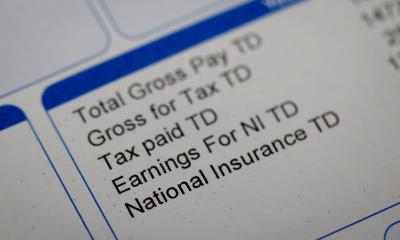
Chartered accountant Howard Hackney provides need-to-know answers to questions about PAYE
What is 'PAYE'?
'PAYE' stands for Pay As You Earn. If you have employees, you must operate a PAYE scheme, which involves deducting income tax and National Insurance (NI) from your employees salary and paying it to HM Revenue & Customs (HMRC). If you fail to do so, you become liable for the tax – not your employee(s). Some disreputable business owners try to argue that they do not have employees and that those who work for them are self-employed, but HMRC will always challenge this. If you employ people, you must set up a PAYE scheme for your business.
How do I set up a PAYE scheme?
You simply call the HMRC Employers' Helpline on 0300 200 3200 to obtain your new employer starter pack, which will include your reference number. Alternatively, you can register online on the HMRC website.
What is RTI?
A new way of reporting PAYE, called Real Time Information (RTI), has been introduced by HMRC. Employers must now submit information about all PAYE payments to HMRC every time a payment is made to employees at the time the payment is made. This payroll information must be submitted online to HMRC, whether weekly or monthly, rather than at the end of the year, as was previously the case.
How much PAYE should I deduct from employees' earnings?
I'd advise you to buy a simple wages software package, which will do the calculations for you, although the HMRC starter pack gives you the information you need to do it manually. It's best to assume all earnings are taxable, because you'll be liable for any tax that isn't deducted. If you're in any doubt, seek advice from HMRC.
You can check whether employees have paid too much income tax under PAYE by using this handy HMRC online tool.
How and when must I pay them?
You must usually pay the deductions to HMRC monthly, if the combined NI and PAYE payments for your employees and sub-contractors averages more than £1,500 a month. If the total is less, you can pay quarterly, although it's better to pay monthly – it lessens the chance you'll fall into arrears. Payments must reach HMRC within 14 days of the end of each tax month or quarter. Tax months end on the 5th, so your payment needs to be in by the 19th. If you make electronic payments, they need to be in by the 22nd.
What happens if I don't pay HMRC on time?
Interest is charged on the late payment of PAYE. HMRC takes a dim view of late or non-payment of PAYE & NI, which, after all, is not the employer's money. Late payment will damage your reputation in the eyes of the authorities, which may cause you difficulties in future.
Are benefits-in-kind paid for through PAYE or are they deducted at the end of the year?
All employees have a coding notice, which enables their employer to calculate the correct amount of tax payable. The coding notice will take into account benefits-in-kind. However, the NI payable on benefits is known as Class 1A NI and you need to calculate this annually at 5 April for payment by 19 July.
HMRC must be informed of benefits-in-kind on form P11D or form P9D annually, although changes in vehicles you provide to staff need to be notified at the time of change. You can submit the forms using compatible payroll software, using PAYE Online or by sending the forms to your HMRC office.
How do I submit my PAYE returns?
You do it online, either by using compatible third-party payroll software or HMRC's own 'Online Return & Forms – PAYE' software. You should be given a log-in by HMRC when you first register as an employer. If you don't have a log-in, you will need to enrol for PAYE Online.
Pay, NI and tax deductions are reported to HMRC, including any statutory payments, each time you make a payment to an employee on or before the payment date.
How are employees kept informed of how much they have paid under my PAYE scheme?
Each monthly pay slip will show the amount of tax and NI deducted for that month and the amount for the year to date. At the end of the tax year (5 April), each employee must be issued with a P60, which details gross income paid, all deductions and the amount of net PAYE.
Where can I go for more advice about PAYE?
Obviously, a good accountant will be able to advise you. For a fee, they'll also be happy to manage your PAYE scheme for you. The HMRC website also contains a wealth of information about PAYE and National Insurance. HMRC also publishes a useful guide to PAYE and National Insurance contributions.
Written with expert input from Howard Hackney.


